Discover 5 Beautiful Villages of Provence

Planning A Visit In Provence
We love the Provence area and find ourselves drawn back to this region over and over. It isn’t hard to understand why – the food, the wine, the medieval villages, historical sites, and artists’ havens make it an irresistible region to visit.
While the area has many fascinating cities such as Arles, Aix-en-Provence, Nice and Avignon, there are so many other small and unique villages to visit in Provence. They deserve some time for exploring as well. Life is slower in these hamlets, and the pace is more relaxed, making them perfect locations to include on your holiday.
We have created a list of the best villages we have enjoyed. A mix of tiny spots and others with more services, but still charming in their own way. We hope you will take inspiration from this blog and plan some time in this special region of France.
Highlights of Provence Villages
✅ Quaint locations with cobblestone streets and very picturesque nooks & crannys
✅ Wonderful shopping opportunities for local Provencal specialities
✅ Unique historical and artistic attractions
CHECK OUT OUR TOP TRAVEL RESOURCES
✦ Find superior accommodations on Expedia.com or Booking.com
✦ Book your rental car wth Discover Cars
Where is Provence?
Situated in the south eastern corner of France, the Provence-Alpes-Côte d’Azur region includes 6 departments. This is essentially everything east of the Rhone River, past Nice to the Italian border, and north of Gap in the Hautes-Alpes department and of course, south to the Mediterranean sea.
Gordes
One of the prettiest villages of Provence is the small town of Gordes. It is a hilltop community also known as a village perché since it sits 340m high, on a rocky cliff, within the Vaucluse Mountains. This height and the view out over the valley are one of its main characteristics, and one of the most stunning photo opportunities that are evident upon arriving at the village.

Gordes has suffered over the years with its population due to earthquakes, industrial changes that impacted its major trades and agricultural challenges, including disease and cold weather that killed off vines and olive trees.
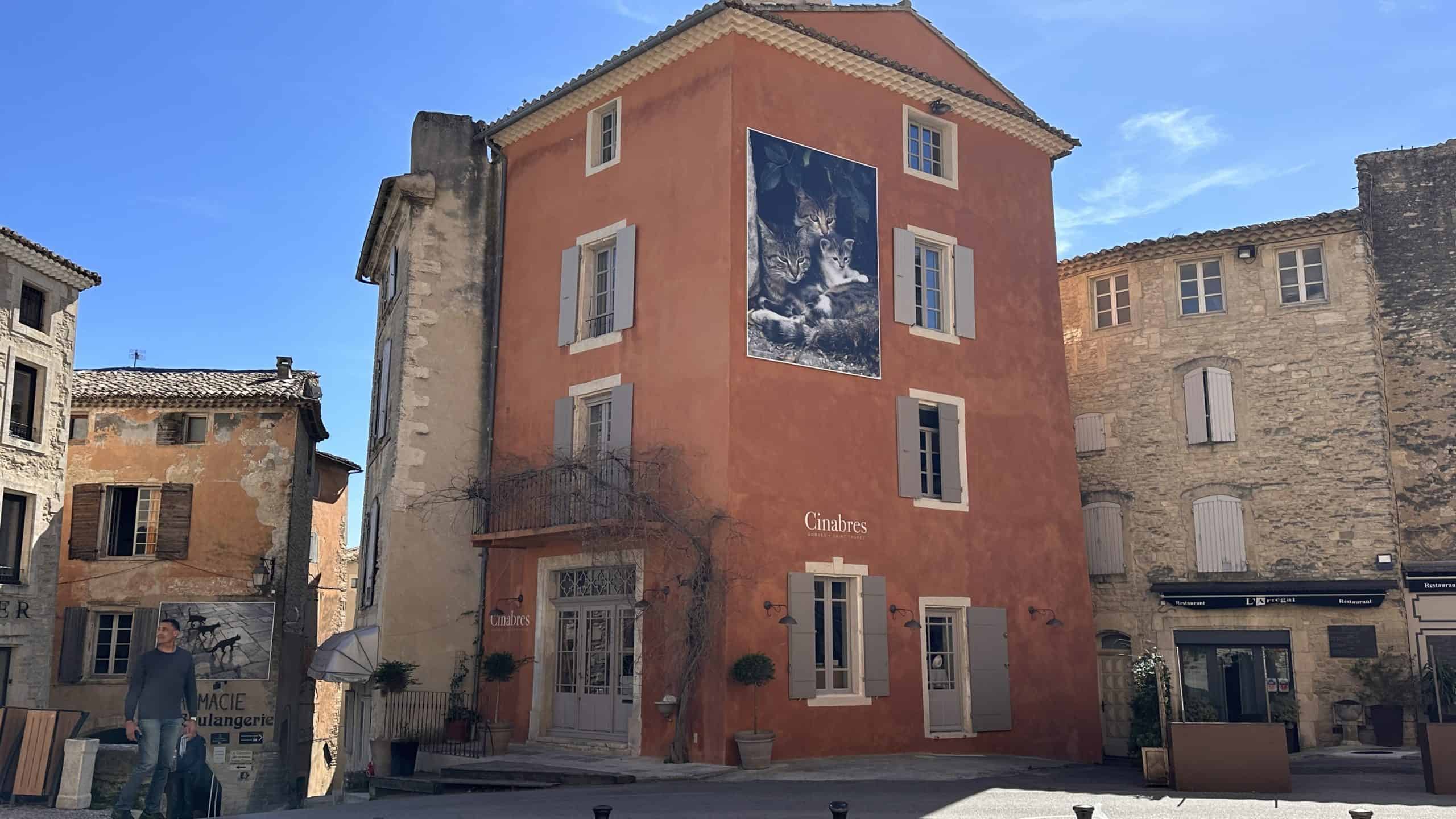
Thankfully, after the Second World War, many artists came to stay in the village and worked on increasing tourism, so the population has slowly increased to 2000 people who now call this tiny hamlet their home.
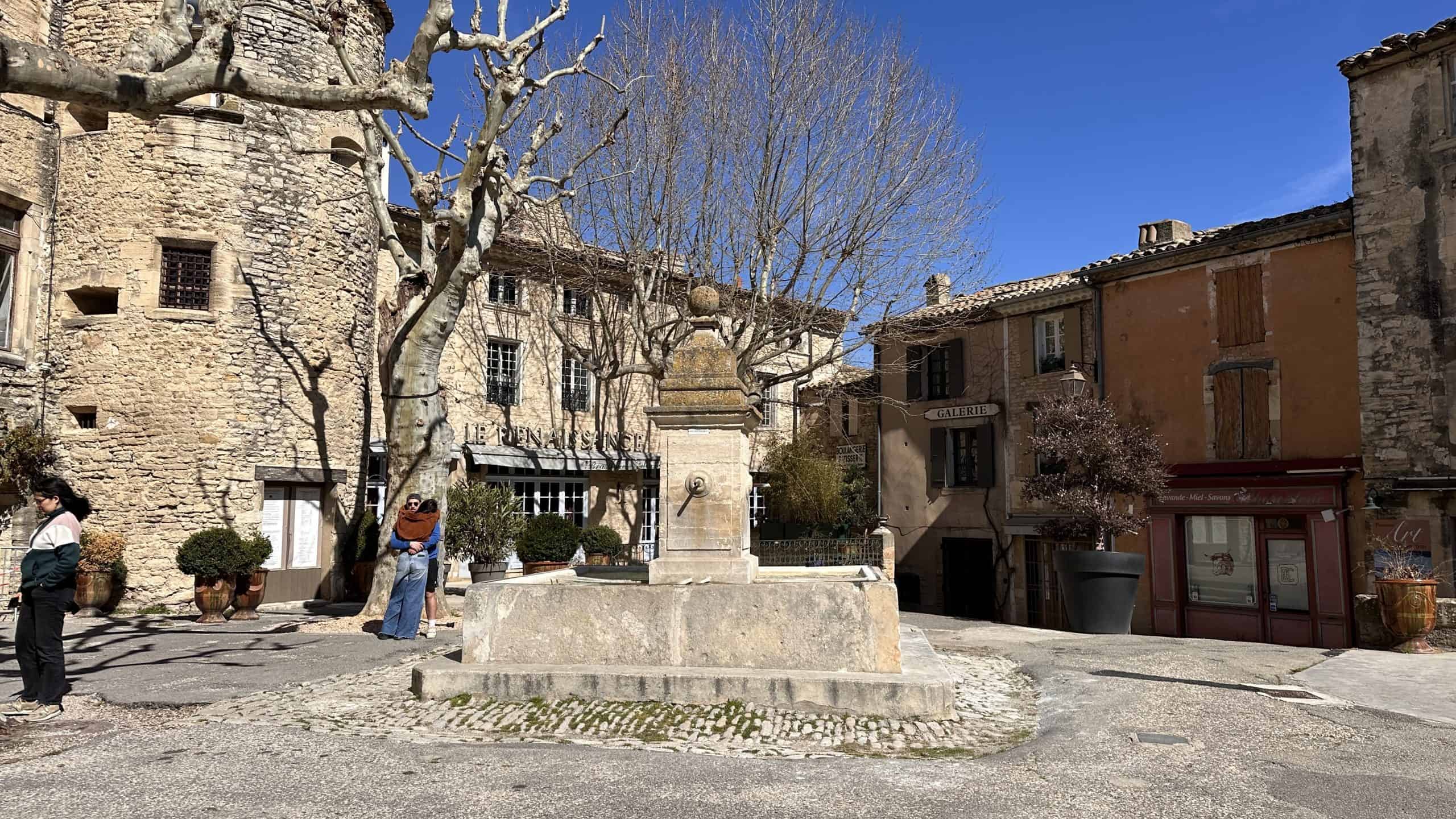
One of the most significant sights in the centre plaza is the Chateau that dates to the 12th century. The structure was originally a Medieval fortress that was enlarged over the years. In the 15th century, it was remodelled into a Renaissance chateau but never really used as a residence. Instead, it was used as a prison, school, and various village services such as a post office, laundry, etc.
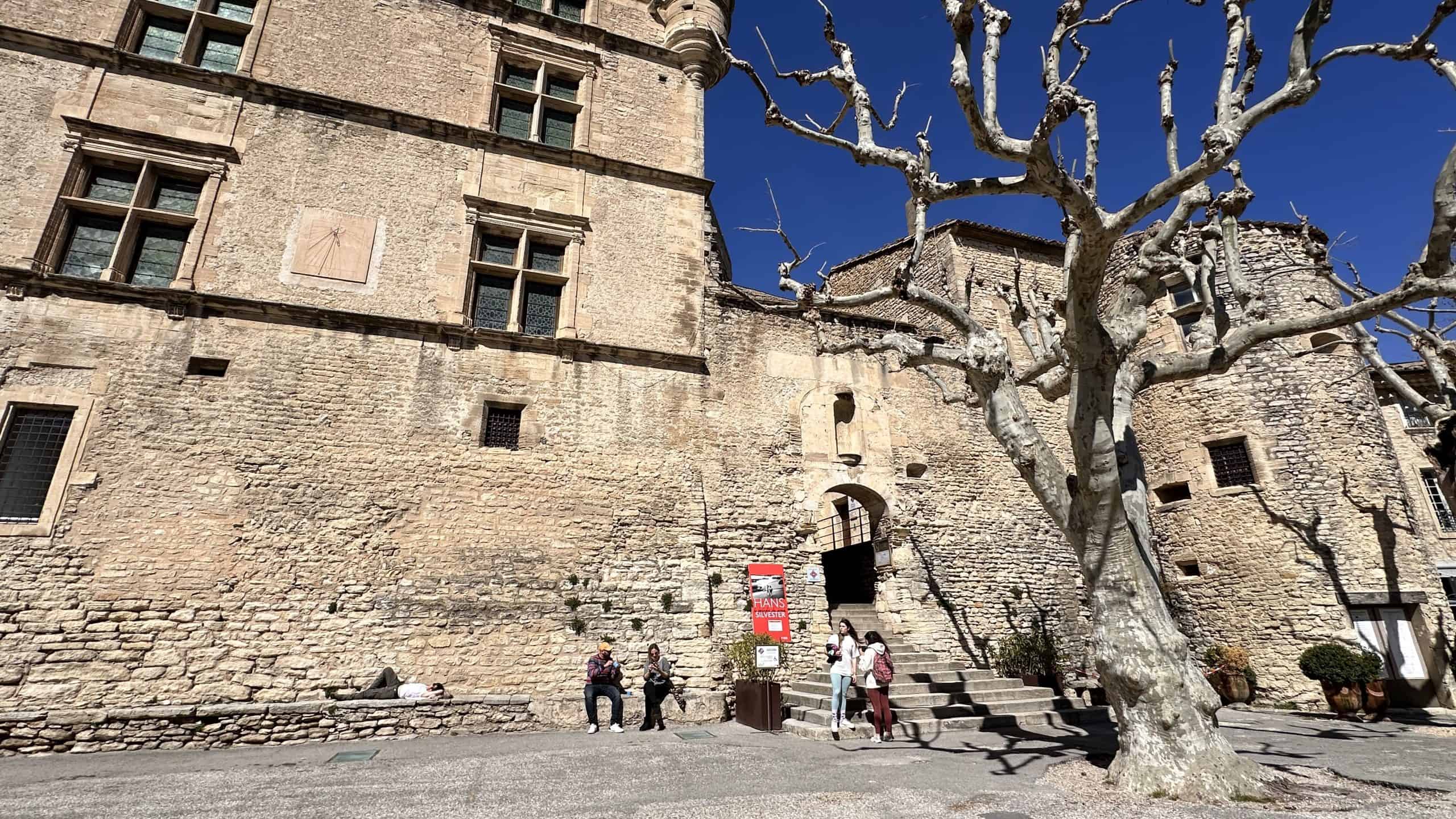
It wasn’t until the early 1970s that Victor Vasarely (known as the father of Op-Art) curated a museum, opened by Mrs Claude Pompidou – same as the Pompidou Museum in Paris, and brought the chateau to the state that it is in now. Inside, on varying levels, there are rotating art exhibitions.

When we visited, the featured show was a photography exhibit by Hans Silvester. His photographs were an incredible look at people from around the world, and the collection in large format was stunning to view. Quite a treat to see such amazing art in a unique location. This reminds us of the museum that houses artwork in the Annecy Castle.

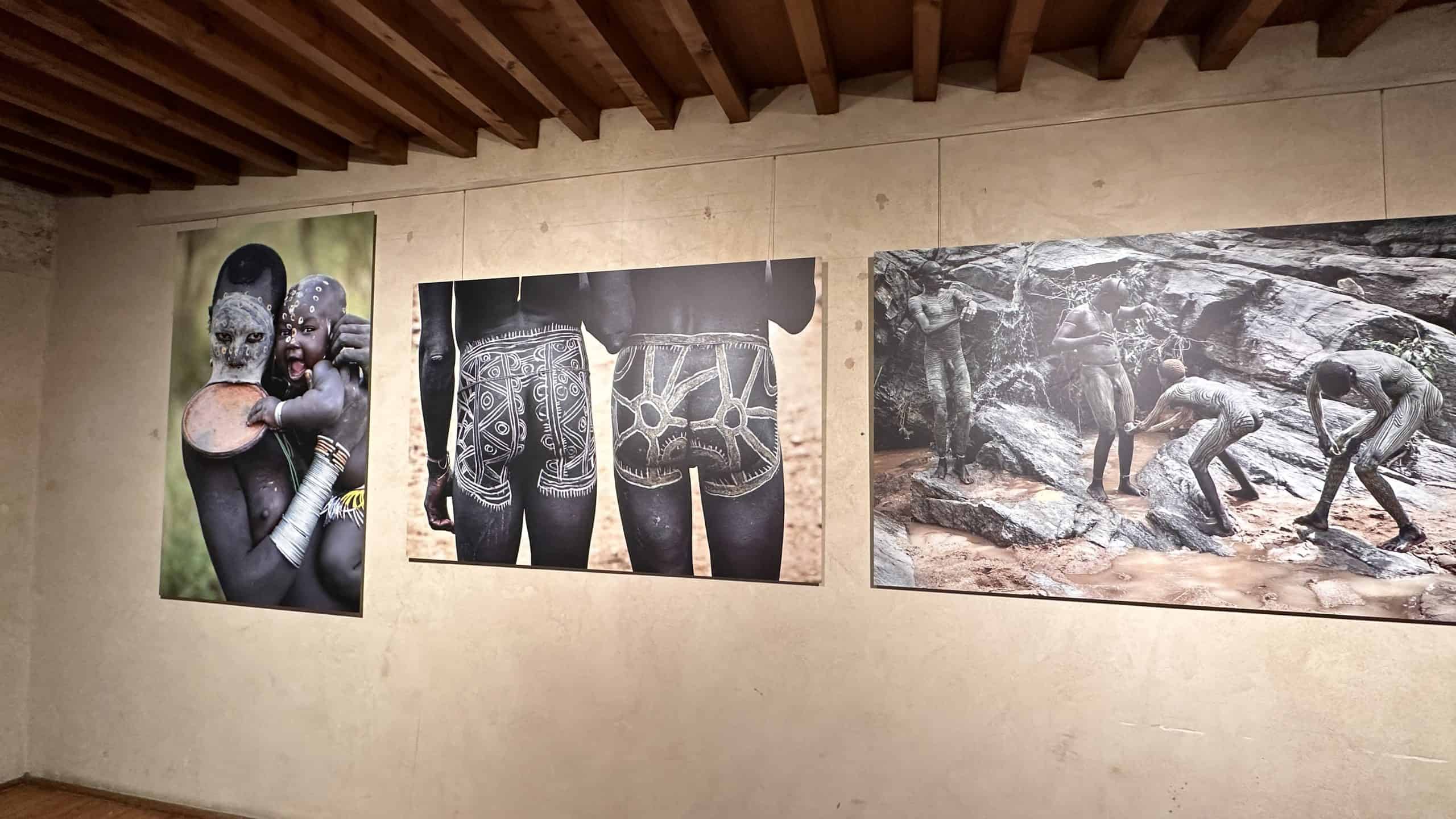
Another spot to explore is the Saint Firmin church. This church was built in the 18th century in the Romanesque style when the population was larger. It has some lovely wood panelling and very colourful murals. Ongoing restoration is taking place inside.
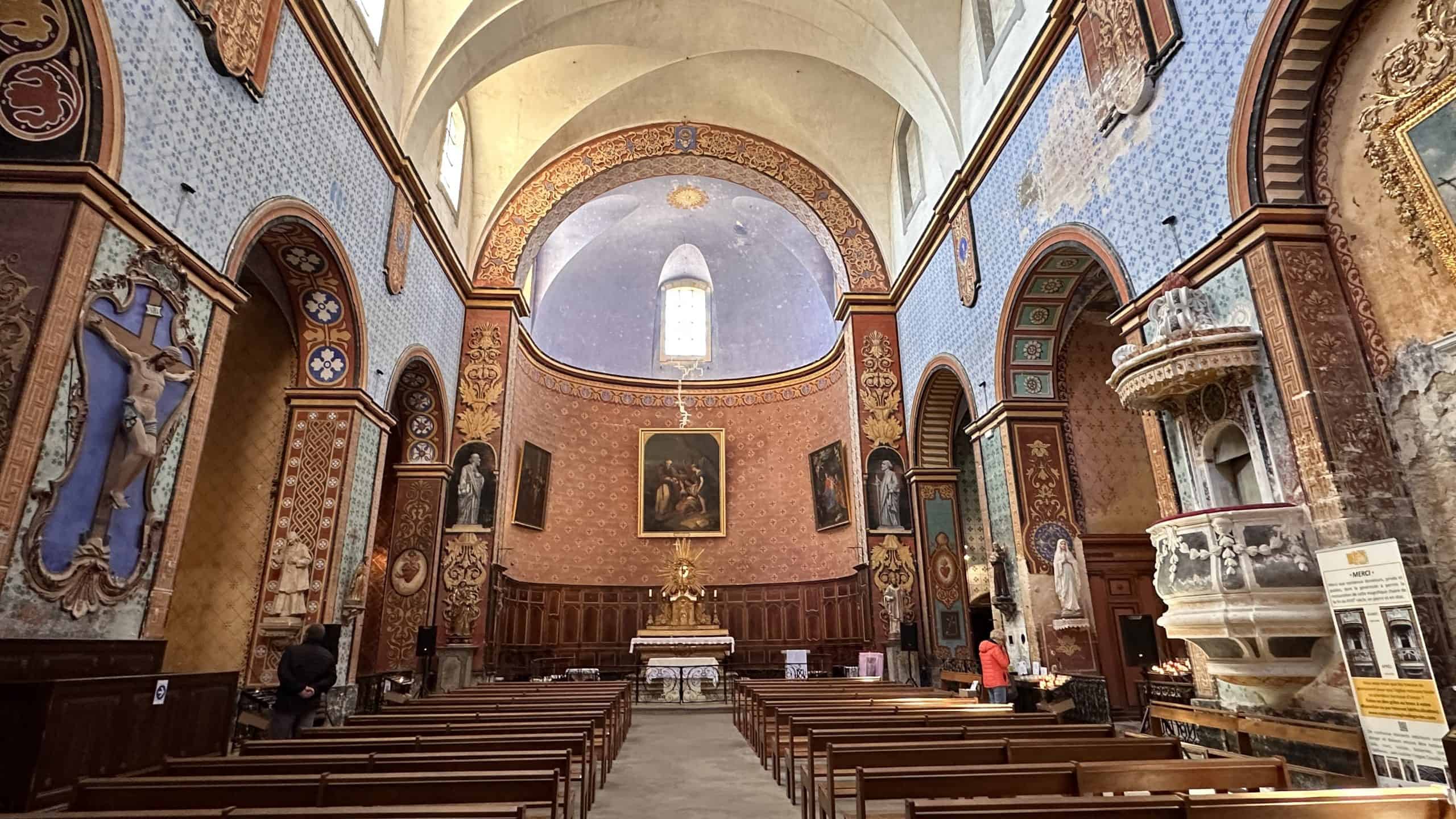
And finally, make sure that you walk past the church down the quaint cobblestone street until you come to the end, where you can see an incredible view of the valley below. On a nice day, it is wonderful to gaze out at the mountains in the heart of the Luberon region.


Where To Stay: Airelles: La Bastide de Gordes
✅ If you would like to explore the Vaucluse area with a qualified guide, consider this perfect tour that will bring you to Gordes, plus Roussillon, another wonderful city in this area.
Saint Remy de Provence
This charming town has a lovely historic centre with many shops, museums and fabulous restaurants. It is a little larger, so it has all the necessary services, but it has still managed to maintain its Provençal charm.
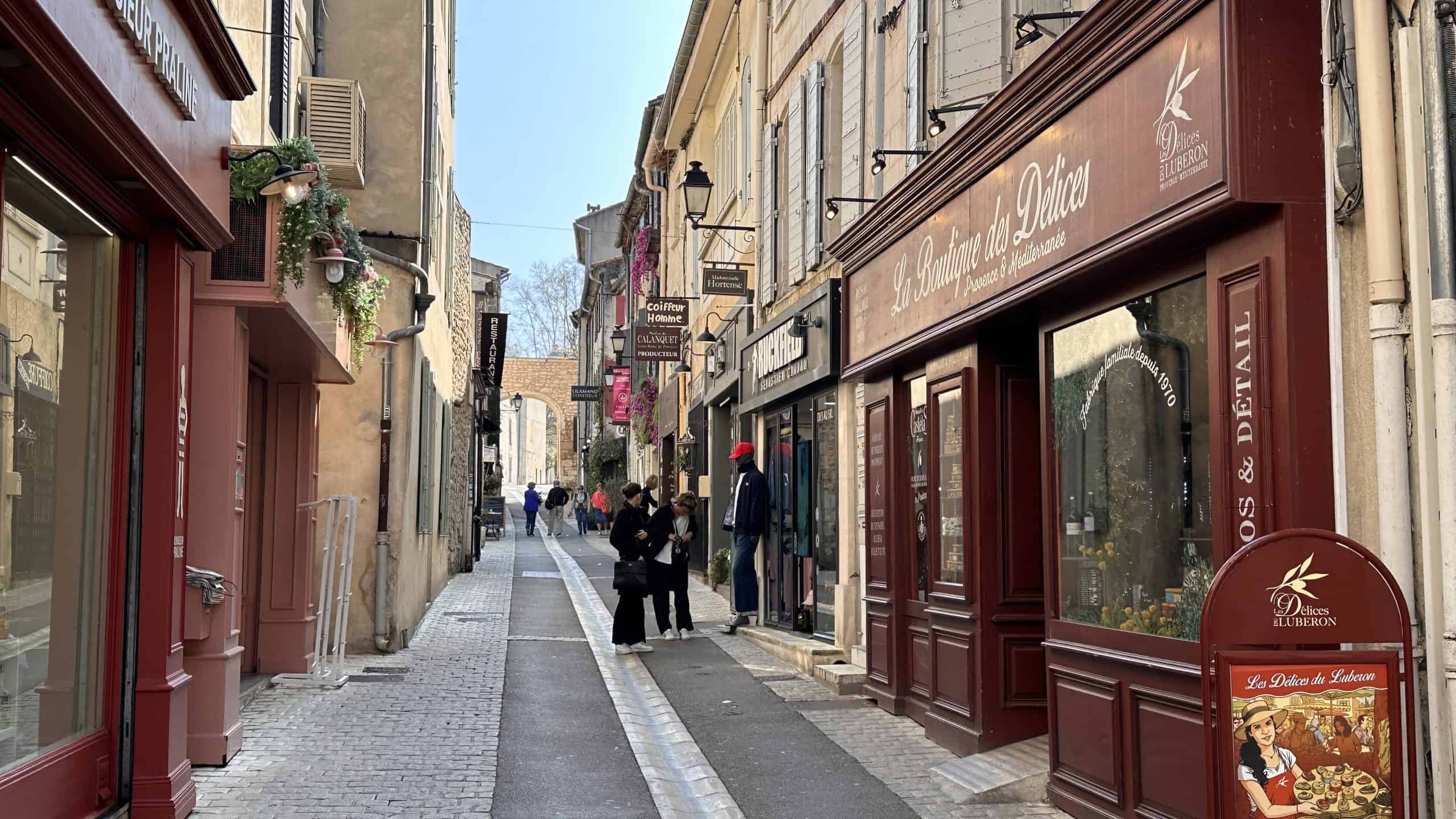
The winding cobblestone streets in Saint Remy are pedestrian only, and we loved the creative displays that shopkeepers created to draw us into their stores. Every restaurant that we visited had welcoming staff, and the regional food was incredible.
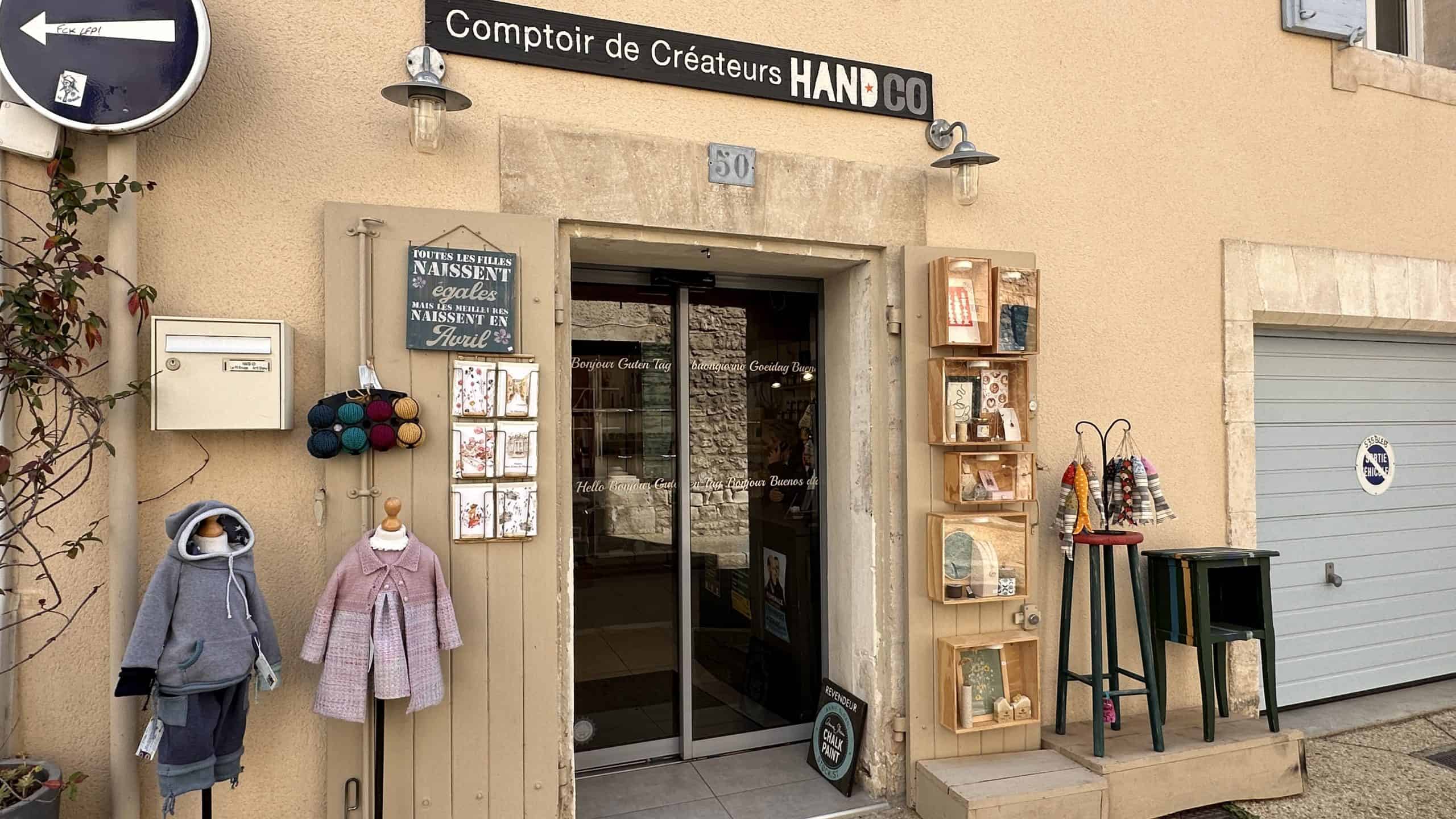
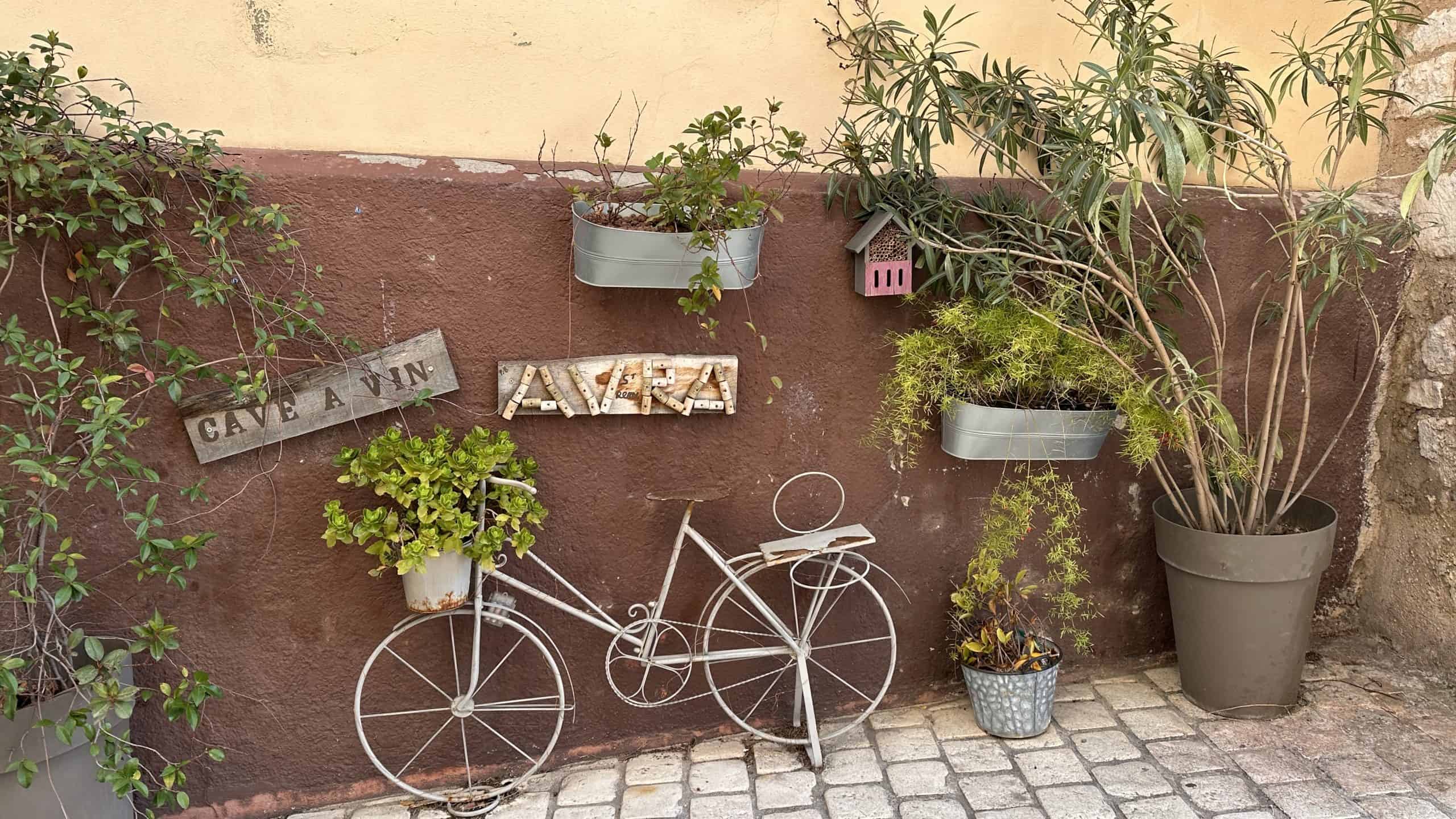
The weekly Wednesday market spills through the streets starting at the Place de République and finding its way through to the Town Hall. Here, the vendors sell fresh produce and local food items, clothing, jewelry, artwork and more. Be sure to arrive early, as the market attracts many locals and visitors from the surrounding area each week.
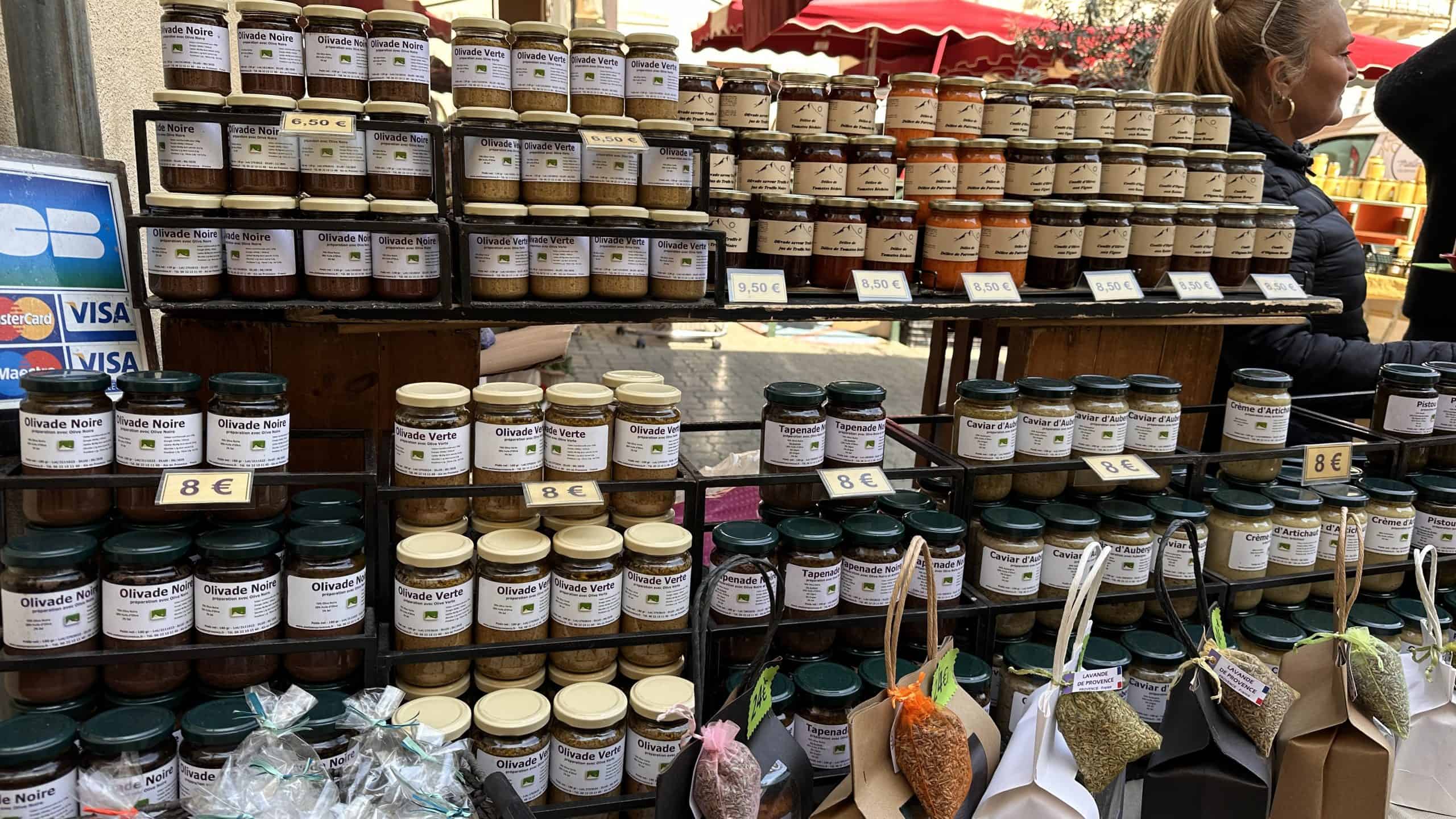
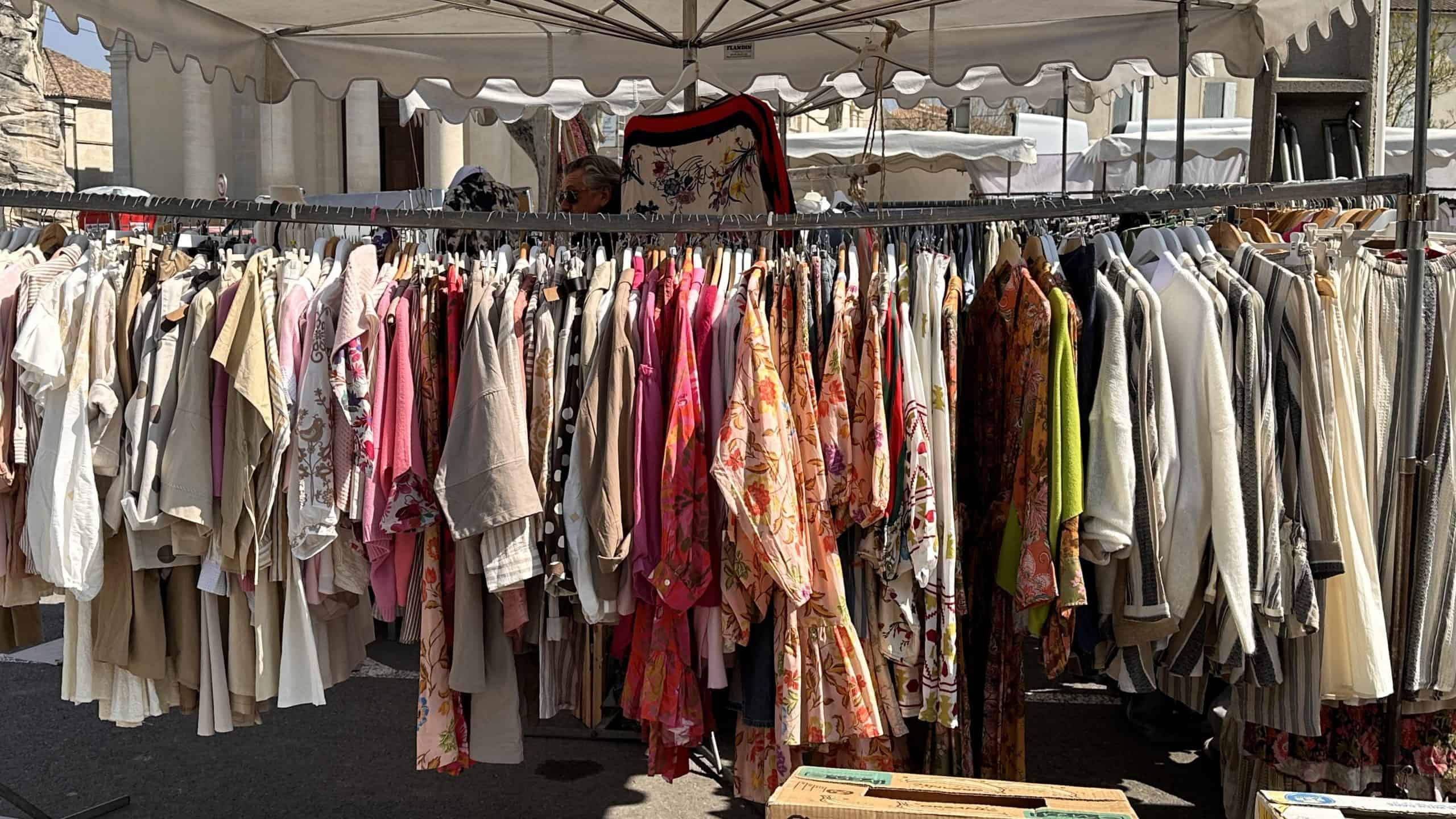

This village has strong ties to Vincent Van Gogh. He spent the last productive year of his life here and was inspired to paint many pieces that are now quite famous. The town has created the Van Gogh Trail, a path with placards of his works that were created from viewpoints in the area.
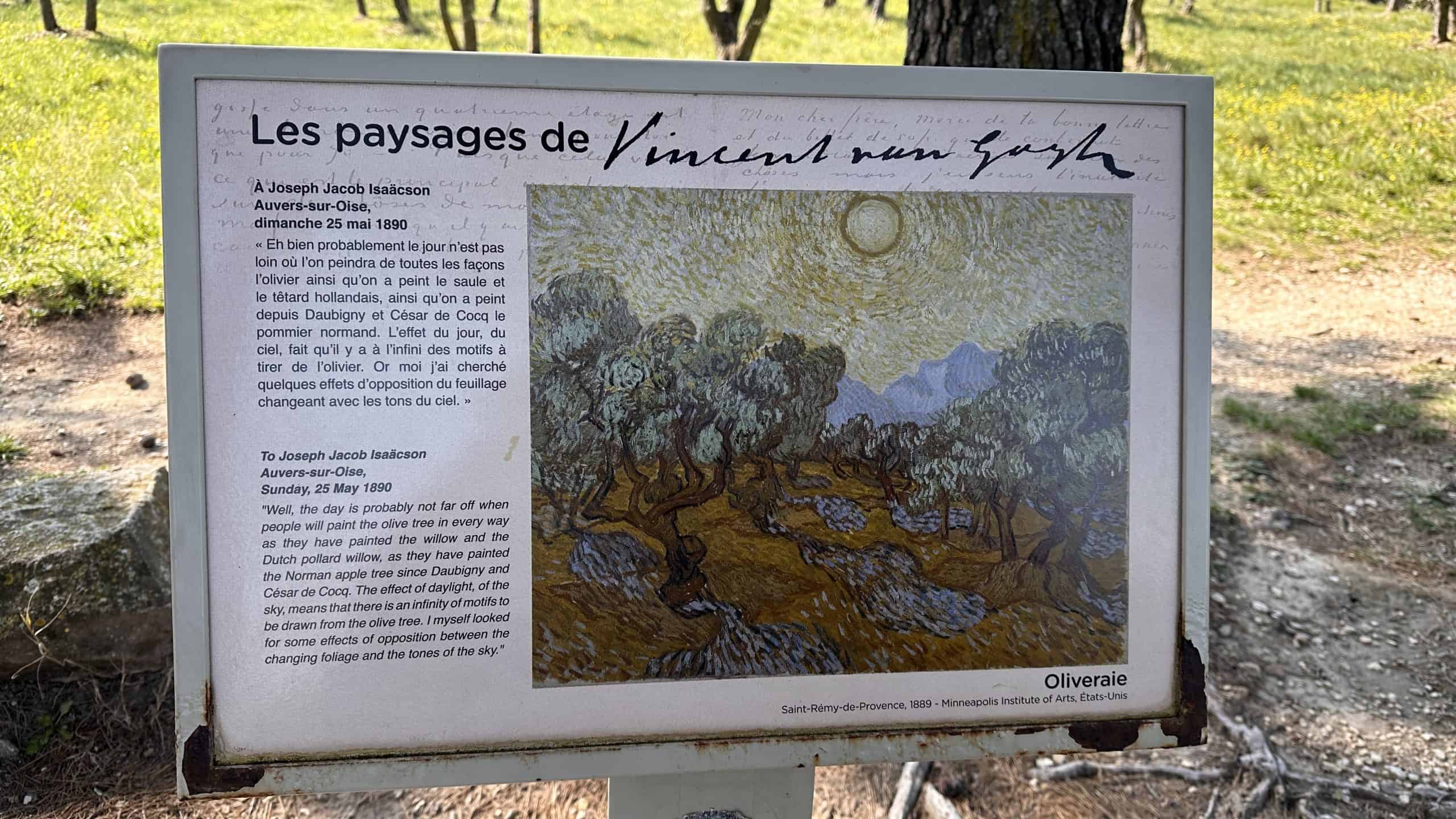
It makes for a wonderful walk, imagining Van Gogh spending his time in the same locations creating the masterpieces that we all know now.
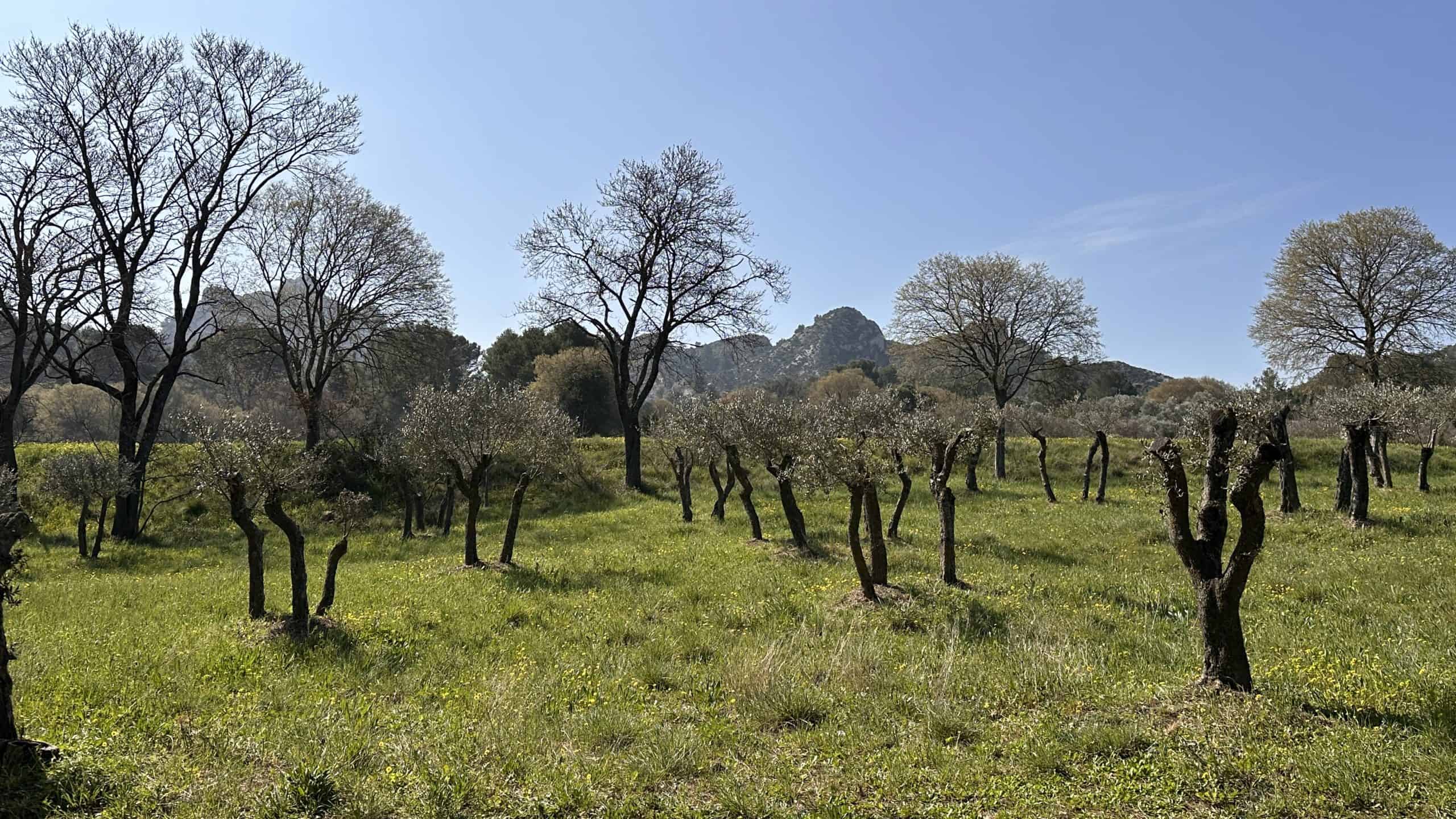
The trail ends at the Saint Paul de Mausole, a psychiatric hospital where Vincent was being treated. Visitors can access the location and see both the common areas and the space where the artist stayed and painted during his time there.



For those wanting to learn more about Van Gogh, in the centre of town is the Estrine Museum that gives detailed timelines of his life, excerpts from his journals and a thorough look into the talented but troubled person he was.
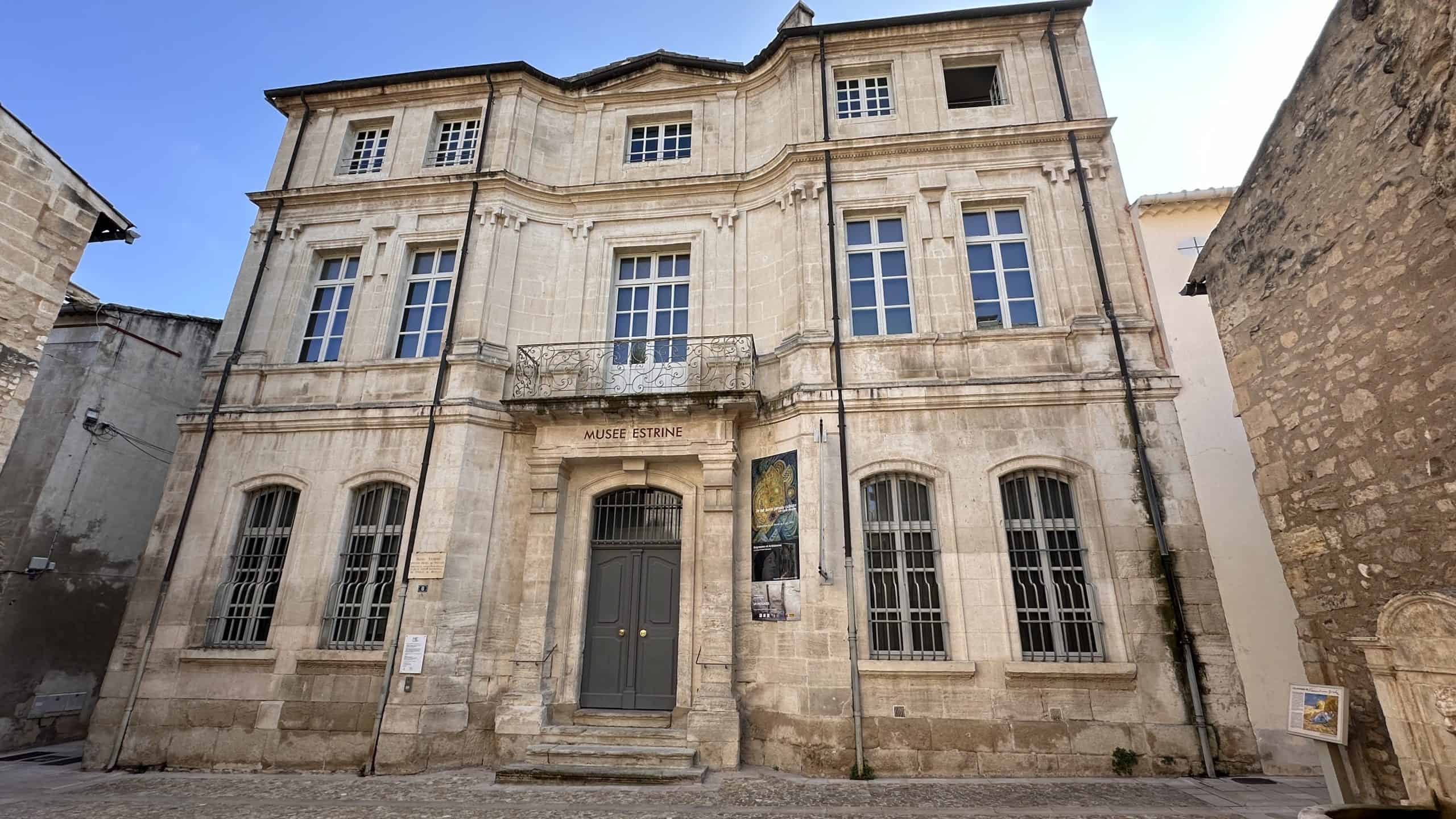
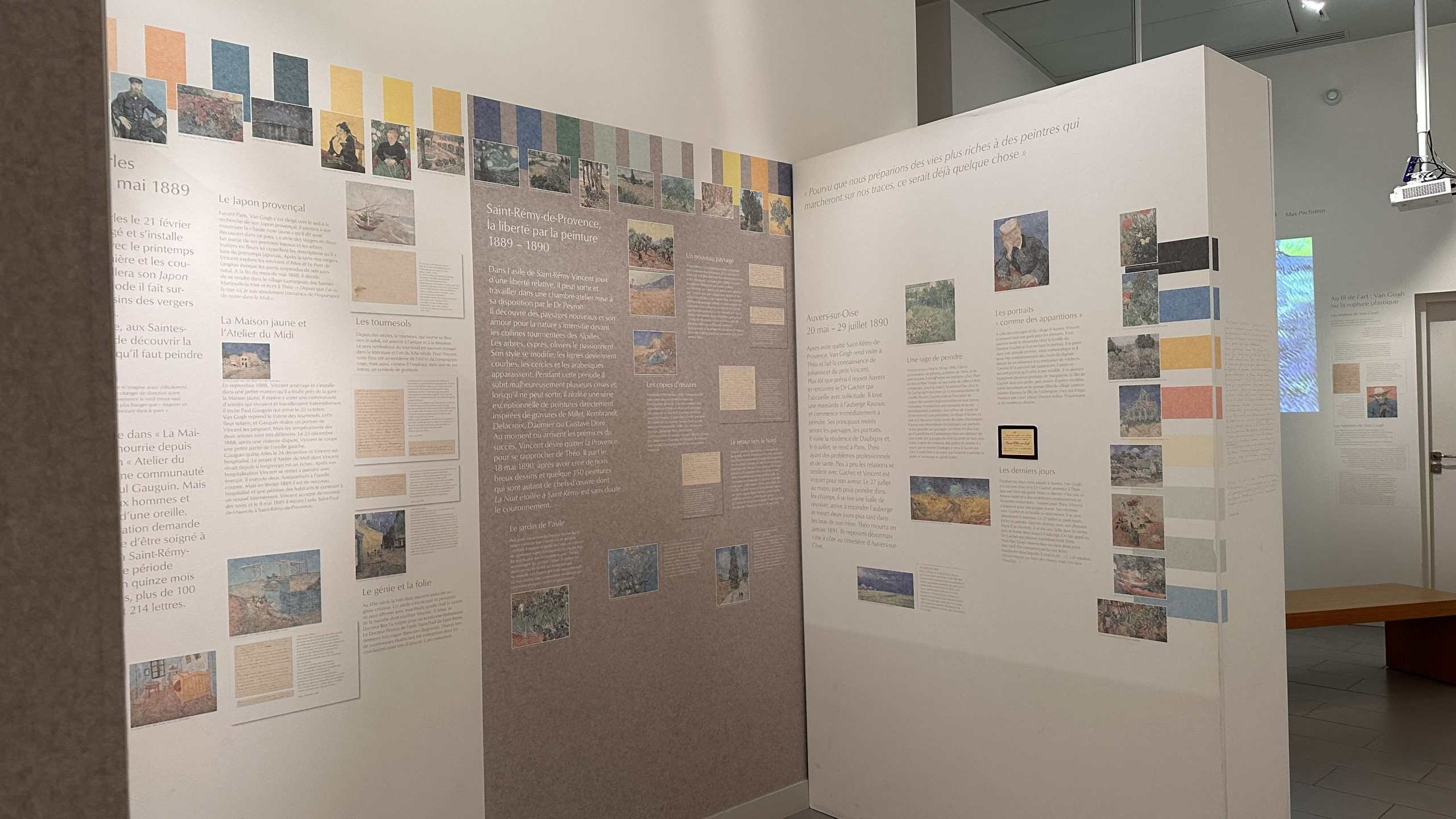
Another amazing place to visit here is the Roman settlement of Glanum. This well-preserved archaeological site was a big surprise. It is quite expansive and visitors can clearly see the outline of homes, shops, the political centre and the baths. Visiting here is a perfect opportunity to follow in the Romans’ footsteps across France.

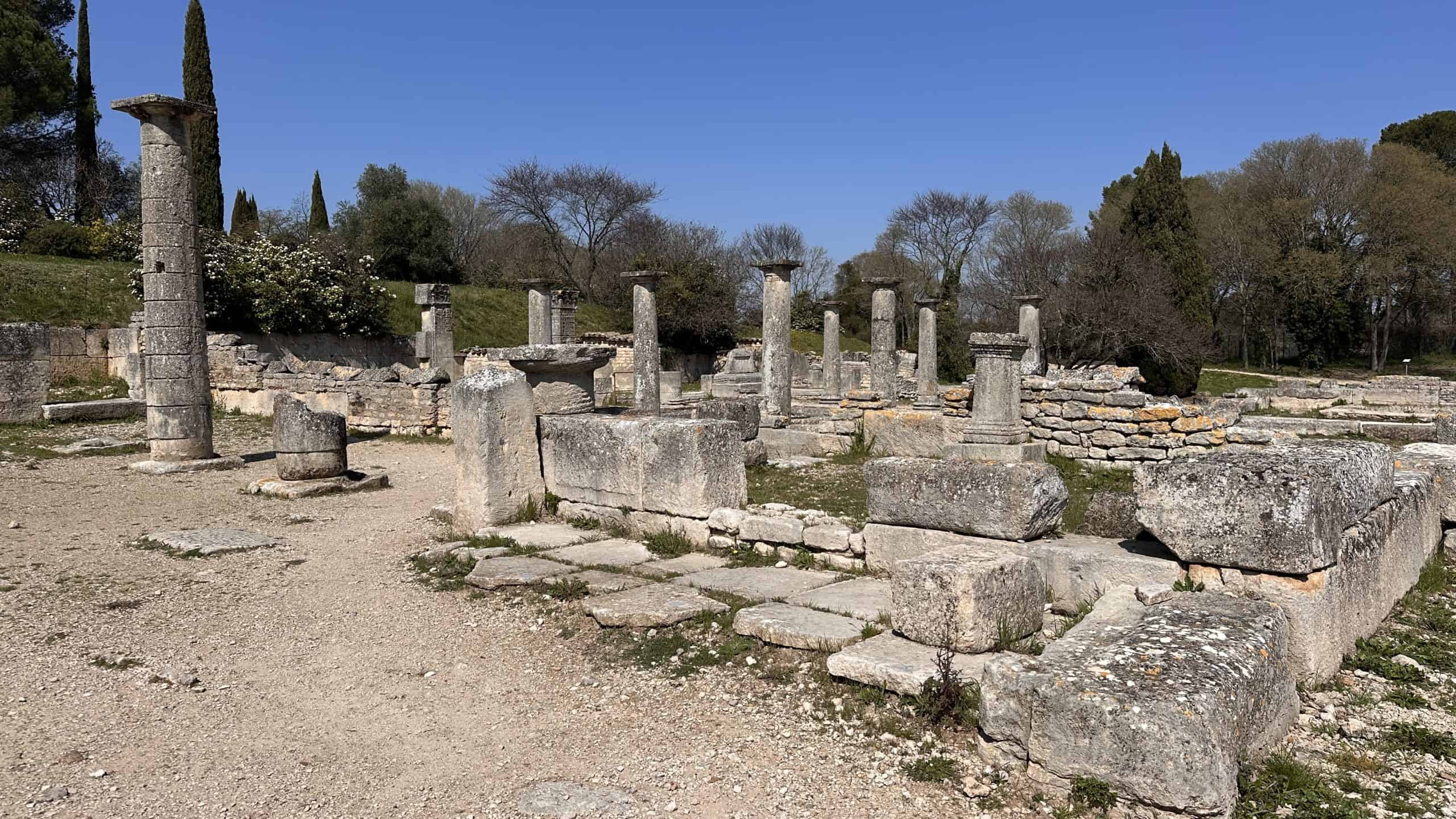
Where To Stay: Hotel de Tourrel
Don’t Have Time To Read This Now? Pin It For Later:
Éze
Another very small village set on a hilltop is the medieval town of Éze. Dating to the 12th century, this location really does look like a fairytale. The narrow, winding cobblestone lanes make you feel like you are stepping back in time.

Every nook and cranny has flowers and plants spilling from the window boxes, and there are arches built into the rock that provide access up to the top of the hill. It is difficult not to stop often to take numerous pictures as you continue to climb.

The tiny shops are set back into the stone, and you need to duck in order to enter the small doorways. Shop owners have very inviting displays beckoning you to come in and look at their offers. Many local jewellers and artisans with handicrafts make beautiful products for taking home as gifts.
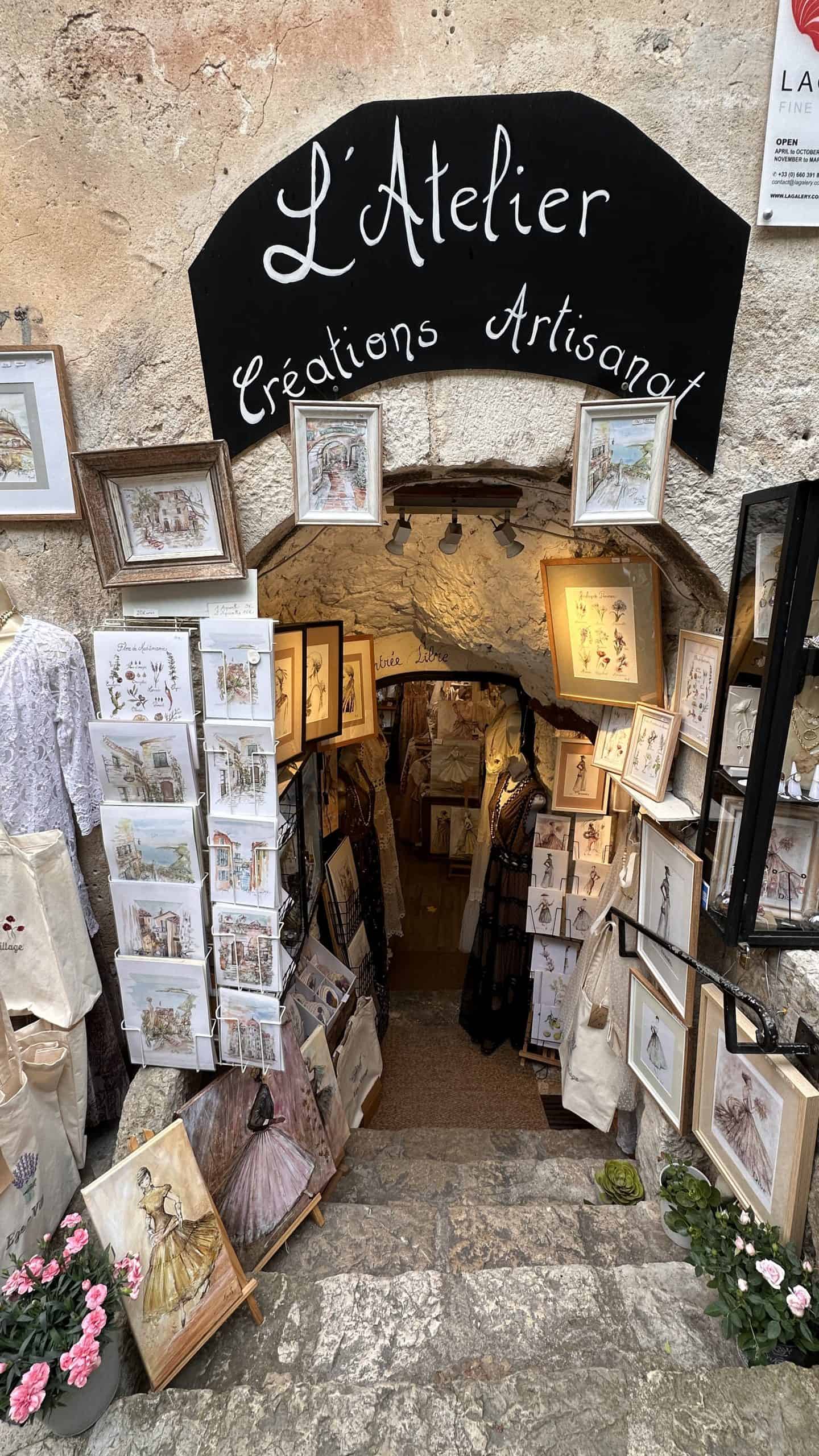
Éze is also the home to one of France’s most popular perfumeries, called Fragonard. This family-run business is coming up on celebrating its 100th anniversary. The products are wonderful, and you can participate in a perfume workshop to learn about the art of making perfume. We loved making our own personalized scent to take home and enjoy.

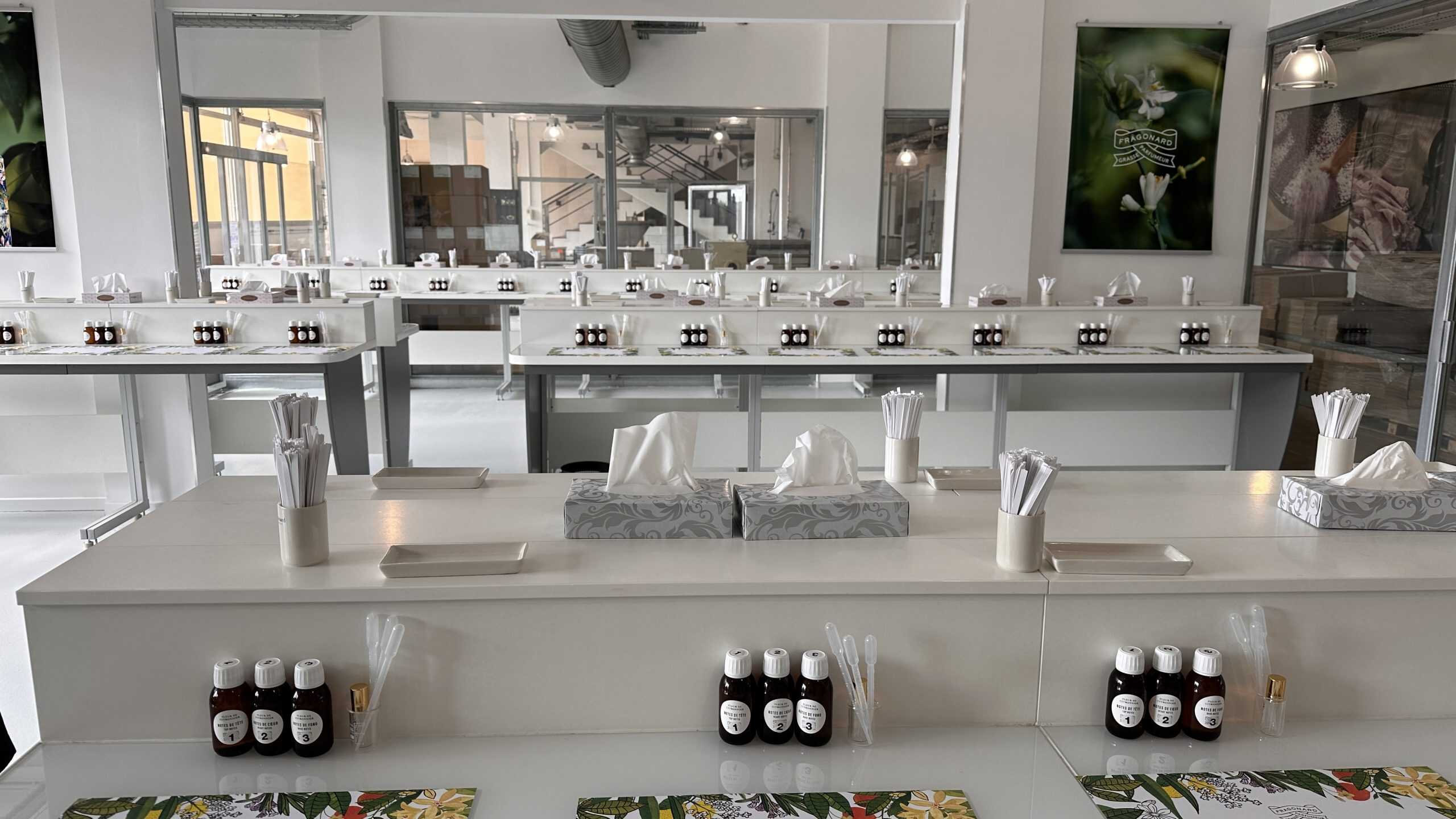
One of the highlights of Éze, situated at the very top of the village, 429 metres above the sea, is Jardin Exotique. This is an extraordinary location where you can see stunning views of the French Riviera while enjoying plants from all over the world.
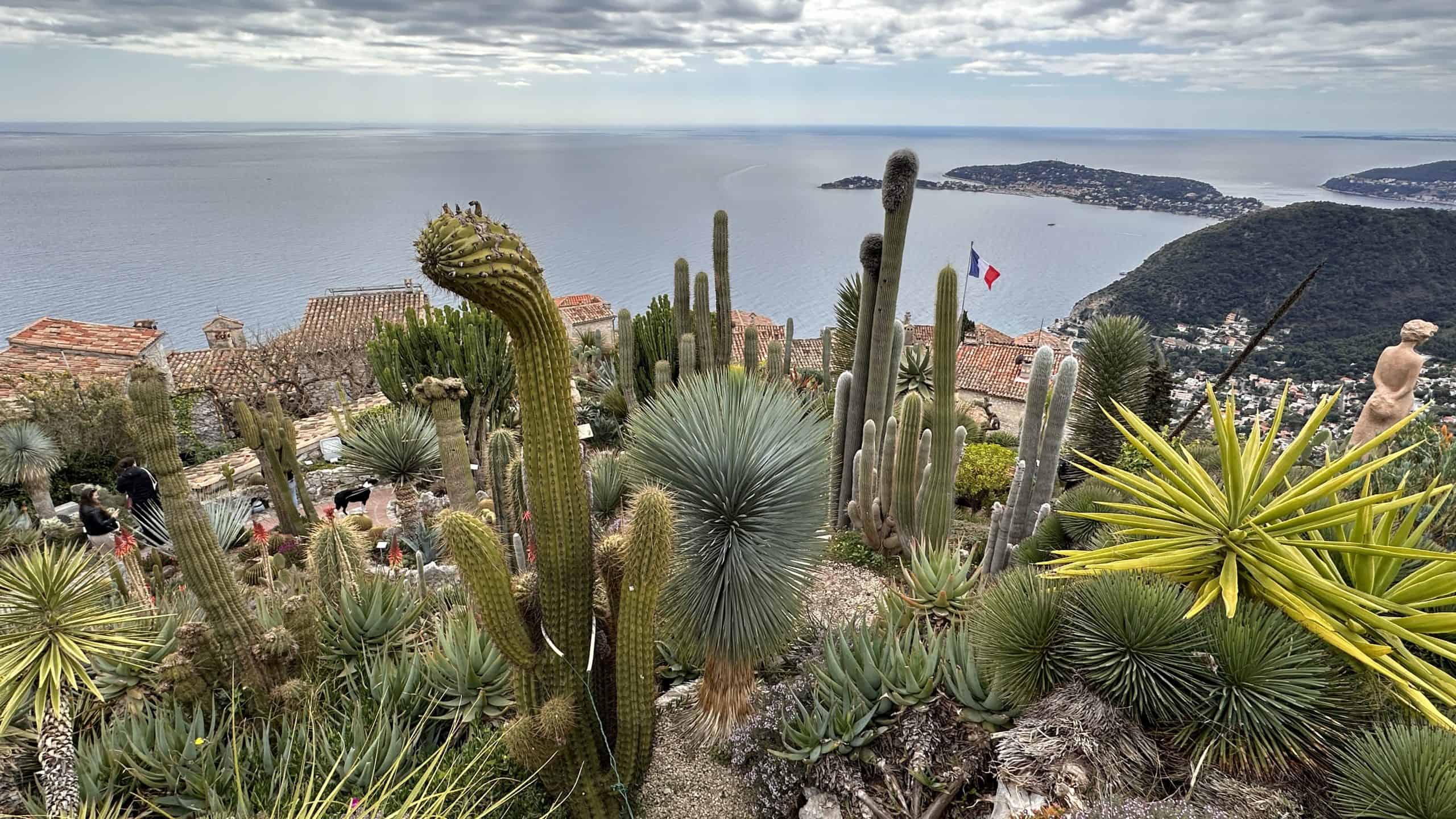
Winding up and down the narrow stairways, the cacti and succulents, along with Mediterranean plants, are planted in gorgeous displays.
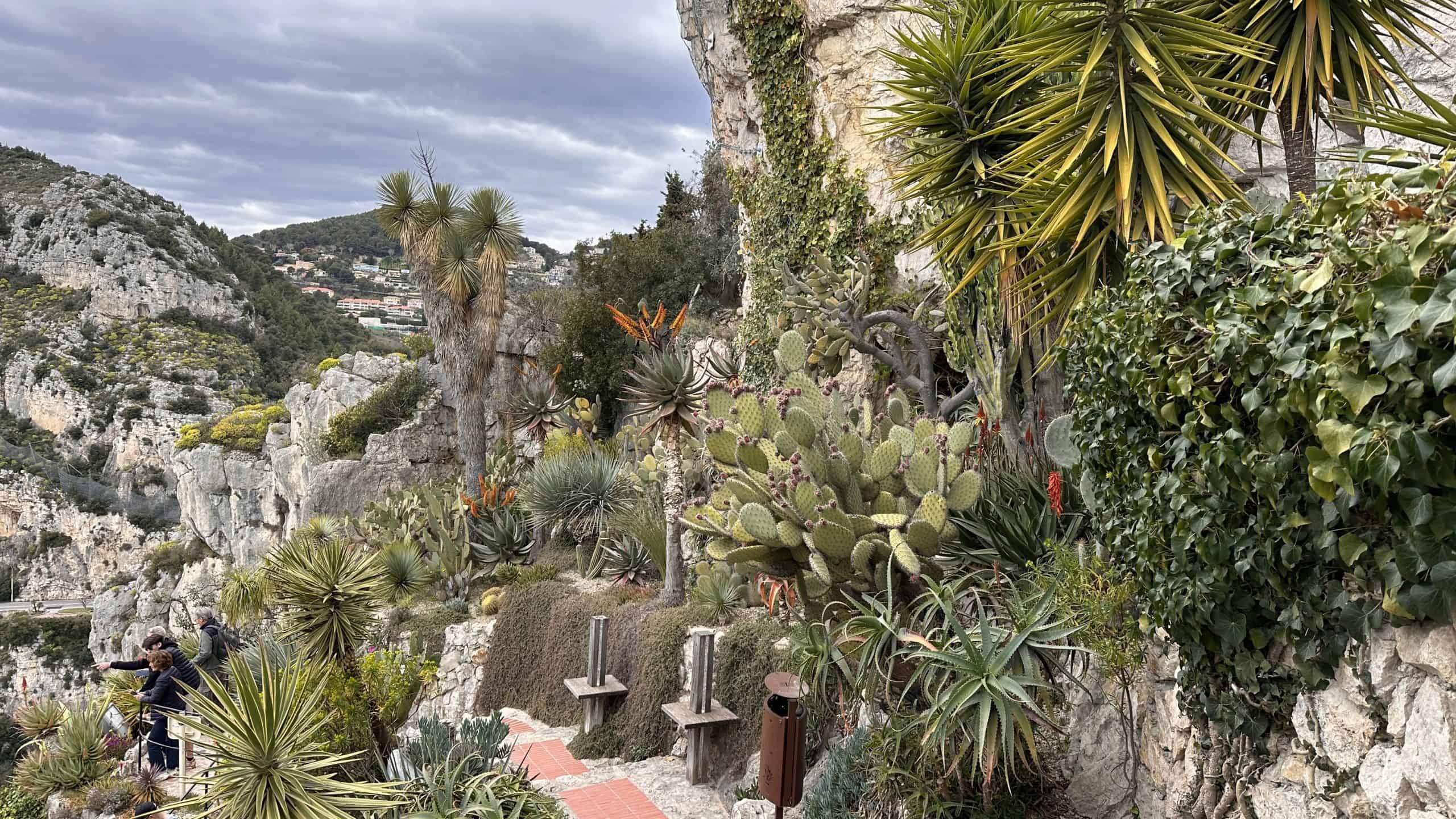
This, combined with an artist’s collection of Earth Goddess statues, makes for a magnificent garden set in an outstanding spot. Be sure to spend some time exploring this attraction when you make a trip to Provence.
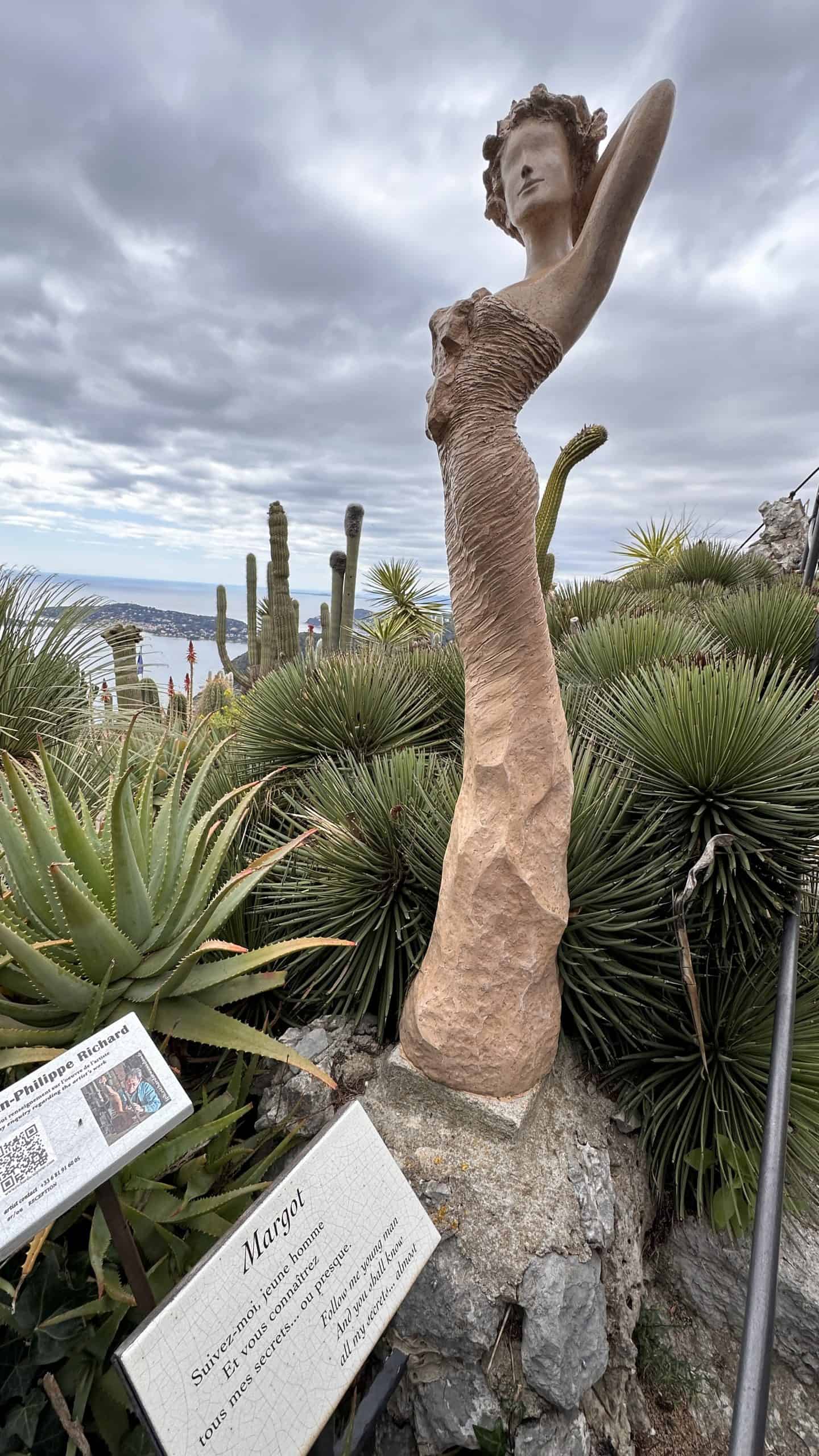
Where To Stay: Chateau Eza
✅ To explore Éze in depth, be sure to check out this tour that focuses on the charm and history of Éze. It includes all the major highlights as well as the stunning Jardin Exotique.
L’Isle sur la Sorgue
This pretty village is built around the Sorgue river with a small island at its centre and numerous canals that can be crossed by the stone bridges. The town originally established itself with the industries of fishing and silk weaving.

Similar to the paddle wheels that you see in Avignon, there are several moss-covered wheels (some that still work) positioned around the river’s edge. We found the island and where the rivers converge to be very picturesque and reminiscent of Annecy.

The big draw here is for the shopper. There are hundreds of antique dealers in this location. Everything from outdoor antique markets to high-end products fit for collectors can be found here.
And twice a week, on Thursday and Sunday, the town hosts its market. Sundays are the day to go when it is at its fullest. This is truly one of the largest markets we have ever seen. It winds along the main canal and expands into the squares and up into the parallel streets.

Local vendors set up their stands, and you can purchase virtually anything. Clothing, fabrics, woodwork, jewellery, beauty products, accessories and of course lavender, all available from local vendors.

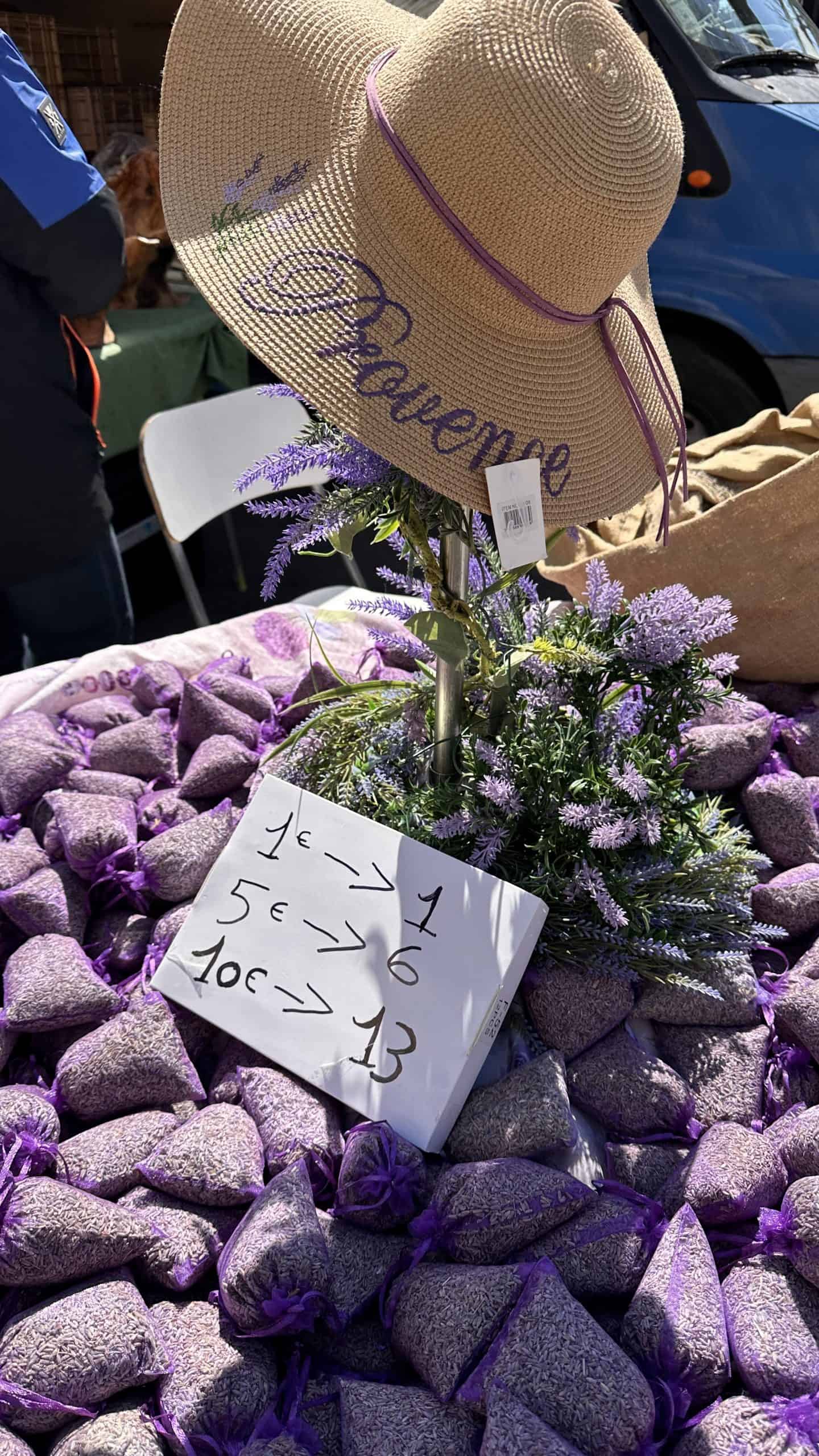
And fresh produce, flowers, regional specialties from the South of France, such as vinegars, tapenades, cured meat, olives, and baked goods, will tempt your taste buds. This is a perfect place to do your shopping for dinner or even to take home some souvenirs.



As you stroll, the air is filled with the music of local artists, and the atmosphere is bustling with people greeting each other and visiting as they do their Sunday shopping. In France, the market is very much a social environment.
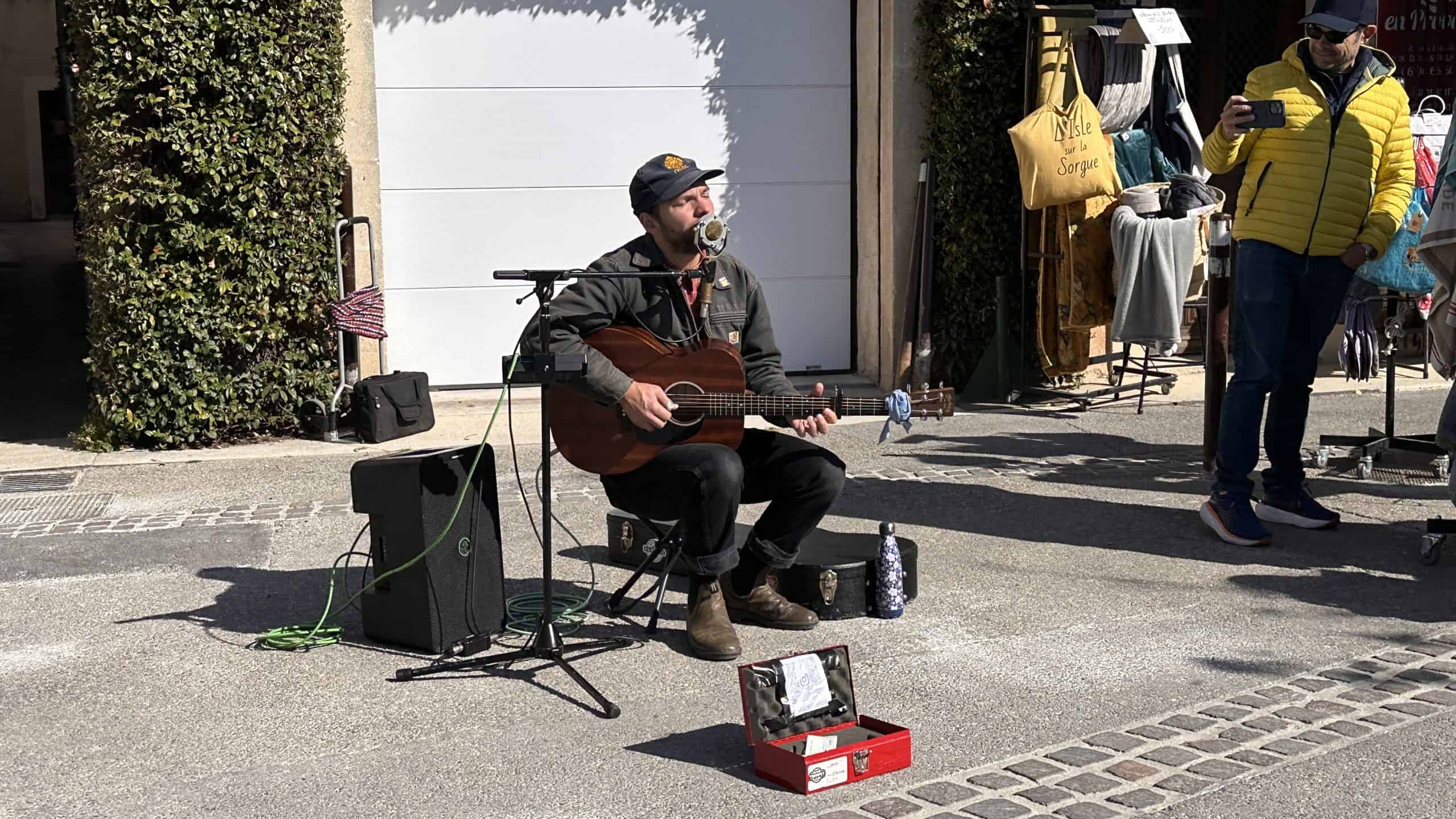
After shopping (you will need a couple of hours), plan to have lunch at one of the bistros along the water’s edge. It’s a perfect place to sit with a charcuterie board and a glass of local rosé, overlooking the canal of this lovely village.

Where To Stay: Grand Hotel Henri
Les Baux de Provence
Our final suggestion to visit is Les Baux-de-Provence, as it has the distinction of being included on the Most Beautiful Villages in France list. Yet another spot, located on the crest of a hill (a theme that is repeated), this location is literally carved out of the limestone of the Alpilles Natural Park.

A medieval village dating to the 10th century, it has been very well preserved. Shops and cafes are available for exploring and picking up local products from the region. And the beautiful views from this elevation are fantastic.



Perched at the top of town are the ruins of the Beax Chateau, a castle from the 13th century. This is a phenomenal must-visit site when there. From the medieval weapons on display to the ruins of a clearly defined castle with sweeping views of the department of Provence, checking out this area is a highlight.
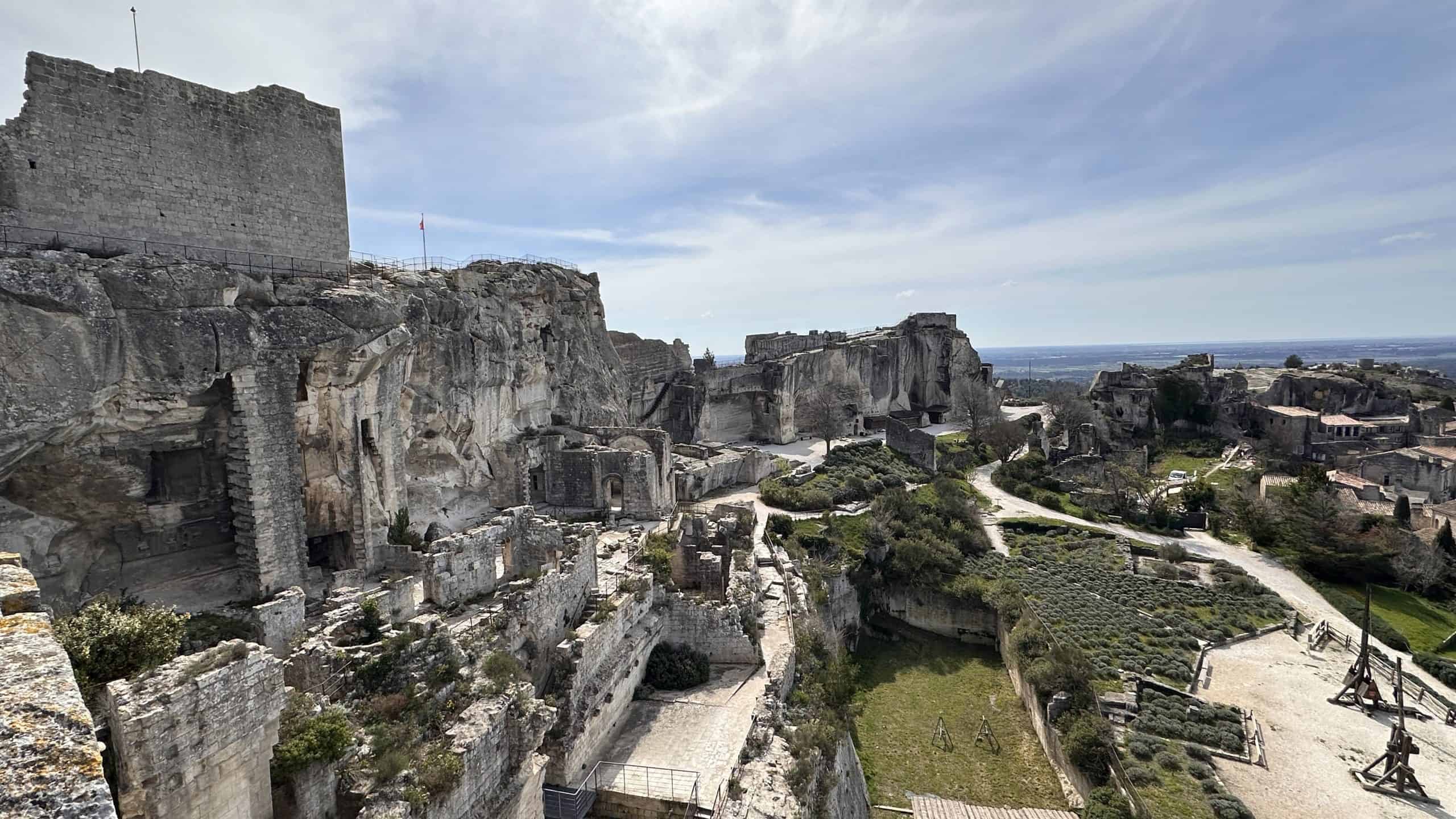

We loved climbing up over the limestone rocks and making our way along the narrow passageways, imagining what it must have been like when it was originally built.

Another amazing use of the limestone in this area is the Carrières des Lumières. Originally an old quarry, the empty, cavernous space has been converted into an awesome projection theatre.

Images from famous artists are projected on more than 7000 metres of wall, ceiling and floor space. Along with a music soundtrack, it allows you to be completely immersed in the moving images. While we have visited other light projection shows, this was by far the best we have ever seen. Make sure you plan this as part of your visit to Les Baux.

Where To Stay: Domaine de Manville
✅ This wonderful five-star tour visits both Les Baux and Saint-Rémy. Explore the villages and Carrières des Lumières. The sights here would make for a perfect day!
The Final Word…Exploring Villages Of Provence
As you can see, there is no shortage of beautiful villages in Provence. And these are just five to get you started. There are many more villages to visit in the Provence Region, several within close proximity of each other. But be sure not to rush. Basing yourself in a central location and taking the time to slowly explore each town is a perfect approach.
Each one is unique for its own reasons, and you want to have the time to leisurely walk around and soak in the atmosphere, try the food, enjoy the sights and immerse yourself in these picturesque villages. These are some of the most beautiful places in the world – enjoy!
